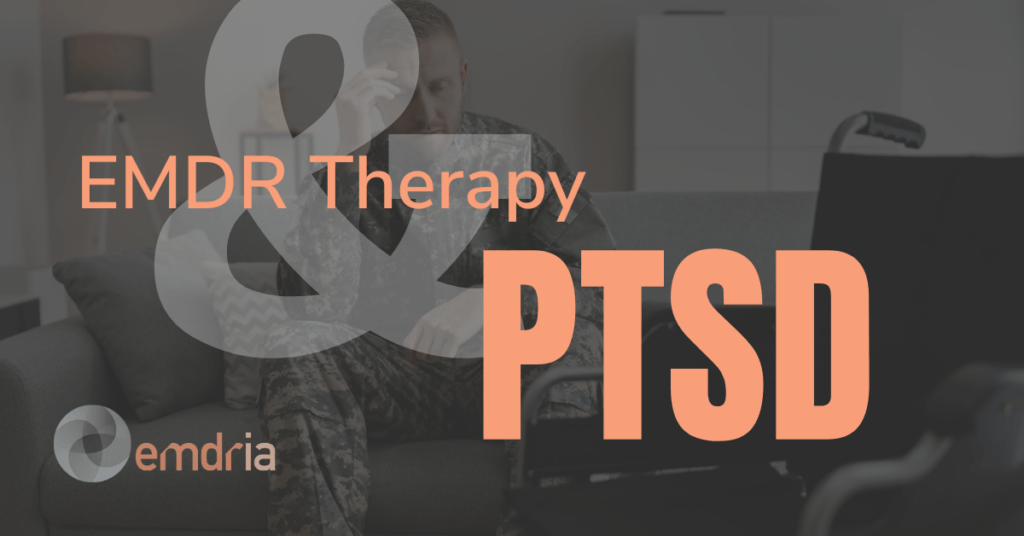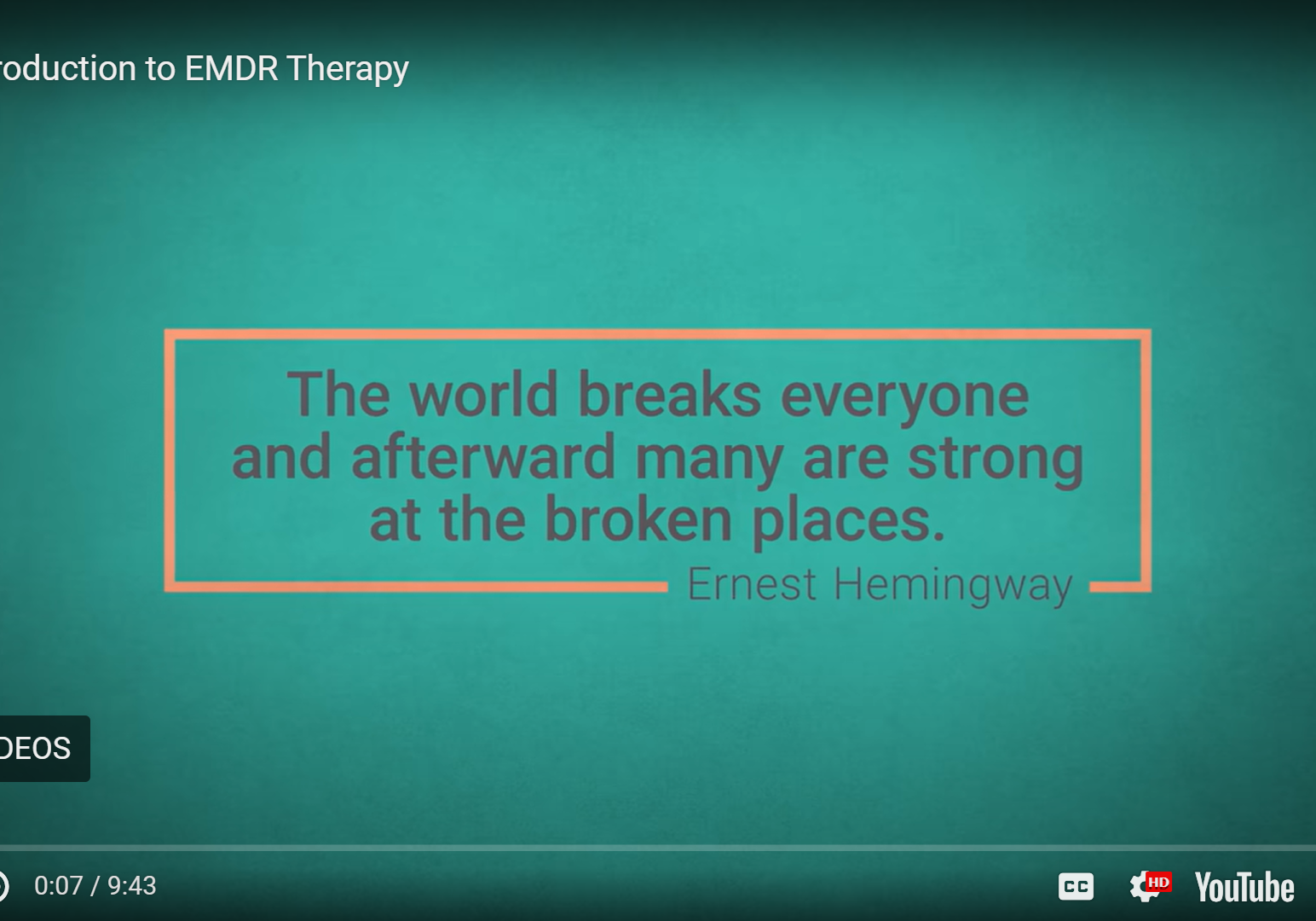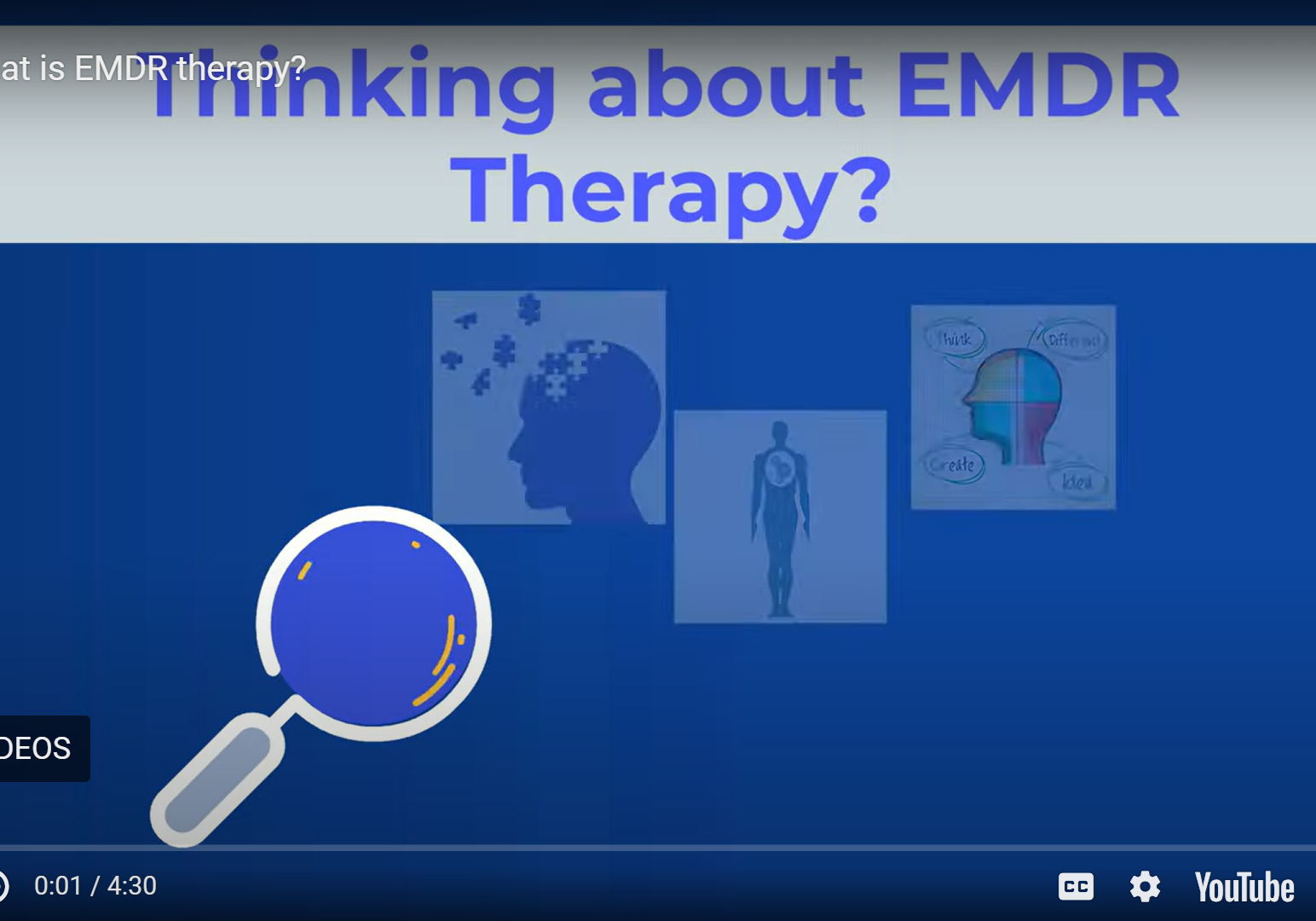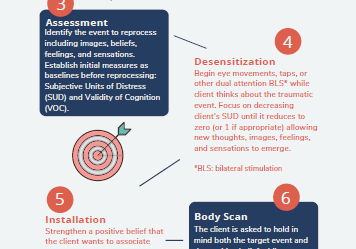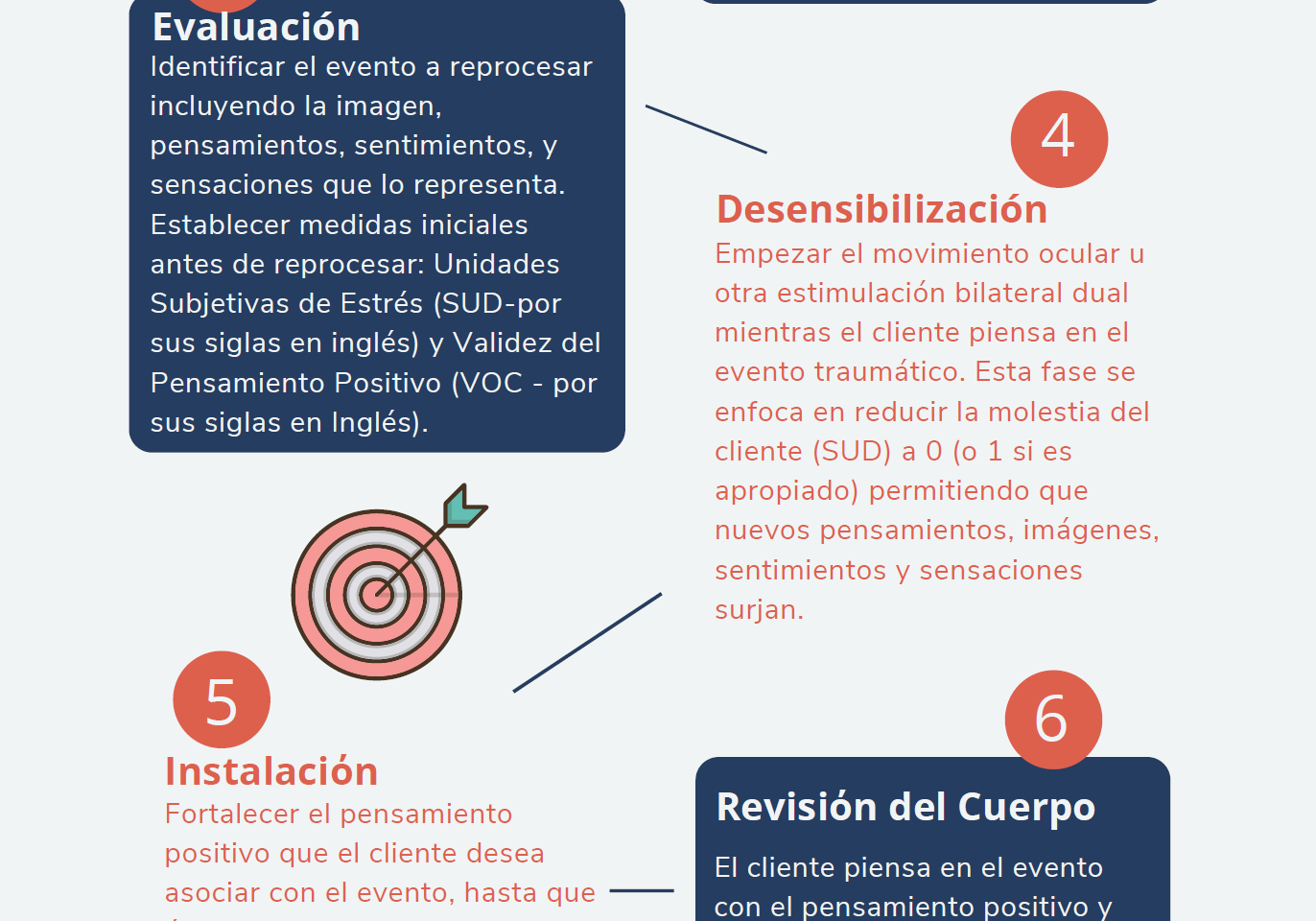Can EMDR therapy help with PTSD?
Yes! Learn how you can experience relief with EMDR therapy.
What is PTSD?
Post-Traumatic Stress Disorder (PTSD) is a trauma and stressor disorder that develops in some people after witnessing or experiencing an event (or series of events) that is shocking, threatening, and dangerous (either physically or emotionally). In some situations, PTSD can result from being exposed to the details of trauma as part of a person’s work, such as first responders or members of the military.
While the human brain has an amazing capability to process stressful information, it is sometimes impaired so that the event is stored in a “state specific” form. This means that images, feelings, thoughts, and sensory information (smells, sounds) can be present as if the event just “happened” no matter how long ago it was. When memories are stored in this raw, unprocessed form, problems, symptoms, and mental health disorders can result. The development of PTSD is one of those potential problems.

How can PTSD affect your life?
While everyone has both positive and negative vivid emotional memories, the memories associated with an event that results in PTSD are laden with fear, pain, and sometimes, anger. You might be shopping in a store and then suddenly feel disconnected from your present surroundings and suddenly have an image, feeling or body sensation just like when the trauma happened. These intrusive experiences or “flashbacks,” make it exceedingly difficult to focus on tasks, interactions with people, or even to feel “normal” without anxiety or distress. Other people experience nightmares, which may or may not be like the original trauma. Sometimes nightmares can be symbolic and have themes like the unprocessed experience.
It is common for people with PTSD to try to avoid anything or anyone that might trigger a reminder of the trauma. This avoidance takes many forms, including people, places, situations, activities, feelings, memories, or thoughts. Additionally, you might find yourself noticing more negative thoughts and feelings and less desire to engage with others or in activities that you once enjoyed. As a result, people with PTSD can develop relationship problems and feel distant from people that they love. Sometimes it is even difficult to access loving feelings towards partners and children.
People with PTSD experience other changes, such as irritability, outbursts of anger, problems concentrating, and difficulty sleeping, to name a few. You might find yourself becoming very “hypervigilant” and always keenly aware of what is going on in your environment. Some people increase their use of alcohol or drugs. Some engage in risky behavior, such as high-speed driving or sexual promiscuity.
While PTSD has a devastating impact on people’s lives, the good news is that it is treatable.

How can Eye Movement Desensitization and Reprocessing (EMDR) therapy help you overcome PTSD?
Eye Movement Desensitization and Reprocessing (EMDR) is an eight-phase psychotherapy approach that helps people recover from trauma without having to talk at length about the traumatic experience(s). It is an effective therapy with a lot of research support. An EMDR therapist will help you to tell important aspects of your story and will be mindful of how your culture and personal context impact you. They will build a working relationship with you, and help you develop tools for coping with how you are feeling currently. The therapist will help you identify your internal and external resources and the experiences causing distress (traumas) and their relationship with current symptoms. The therapist will assess your readiness for addressing your trauma and move at a pace that works for you. If a client is not sure what event(s) have caused the PTSD symptoms, an EMDR therapist can help them to identify how their current symptoms are connected to past events and how they can be resolved.
When you are ready to reprocess an event that is causing your PTSD, your therapist will ask you important questions about the event including your thoughts, feelings, body sensations, and images. To start reprocessing, you will think about the event and follow movement with your eyes (or alternatively hold tappers in your hands or listen to tones or do self-tapping on your chest alternating the left and right side (butterfly hugs). The movements are called dual stimuli or bilateral stimulation. During the reprocessing you will notice what happens in your body, thoughts, and feelings without judging them or trying to change them. You just go with what comes up and briefly report changes to your therapist between sets of movements. Notice how it changes during the reprocessing sessions. While at the beginning people rarely believe that how they feel can ever change, EMDR therapy does help people reprocess traumatic events so that they are no longer stored in that raw, vivid, state specific form. After reprocessing, people link the traumatic even with an adaptive positive belief such as “I did the best I could,” or “I am safe now.”
EMDR reprocessing takes a number of sessions and can be done either in person or remotely via telehealth. At the end of each session your therapist will help you to return to a calm place and talk to you about how to “close” down the work until your next session. The number of sessions that someone might need with EMDR therapy depends on many factors such as: if there is only one incident or many incidents of trauma, how long ago the trauma(s) were, and how much support was received after the trauma.

What are clients saying about EMDR therapy for PTSD?
“EMDR literally saved my life. I was having nightmares 3-4 times a week and was feeling suicidal.”
—Monica, age 55
“As much as I didn’t want to do EMDR, it felt like a life-or-death choice for me. I am no longer an angry person. I feel only pity and compassion for my parents. I no longer believe that the accident I had was my fault, it was an accident.”
—Jake, age 40
“For nearly 10 years I struggled in all areas of my life because of a date rape. I didn’t date, I dropped college classes constantly, I lost a lot of jobs because I stopped showing up. I didn’t see how EMDR would change anything, but it did! I no longer see the person who raped me everywhere. I graduated college and I have a boyfriend!”
—April, age 30

What questions can you ask your EMDR therapist about using EMDR for PTSD?
- How would I know if EMDR reprocessing is right for me now?
- What can I expect from EMDR therapy?
- How can I prepare for trauma reprocessing with EMDR therapy?
- How does EMDR therapy help with PTSD symptoms?
- What is your training and experience with EMDR therapy and PTSD?
- Can EMDR therapy make PTSD worse? If so, what can I do?
- What will we do if I start to feel overwhelmed during reprocessing?

What's the next step?
Find an EMDR Therapist® in Your Area
The EMDRIA™ Find an EMDR Therapist® directory is an up-to-date resource to find EMDRIA™ members providing EMDR therapy in your area. The directory includes searches by location, name, and other criteria.
Want to learn more about EMDR therapy?
Introduction to EMDR Therapy
In this video, learn what it’s like to experience EMDR therapy and how the therapy is widely recognized by trusted organizations.
Thinking about EMDR Therapy?
What does EMDR therapy look like? This short video for clients explains the 8 Phases of EMDR Therapy and what they might experience in EMDR therapy sessions.
8 Phases of EMDR Therapy Infographic
Discover the 8 phases of EMDR Therapy to treat traumatic events. From history and treatment plan to reevaluation and more.
Infografía de las 8 fases de la terapia EMDR
Descubre las 8 fases de la Terapia EMDR para tratar eventos traumáticos. Desde la historia y plan de tratamiento hasta la reevaluación y mas.

Research on EMDR therapy for PTSD
EMDR therapy is listed as a treatment for PTSD and/or other trauma and stressor disorders by many reputable organizations. These treatment guidelines are based on reviews that evaluate research of established evidence-based mental health treatments.
More Resources
Find more PTSD resources in the EMDRIA™ Library.

